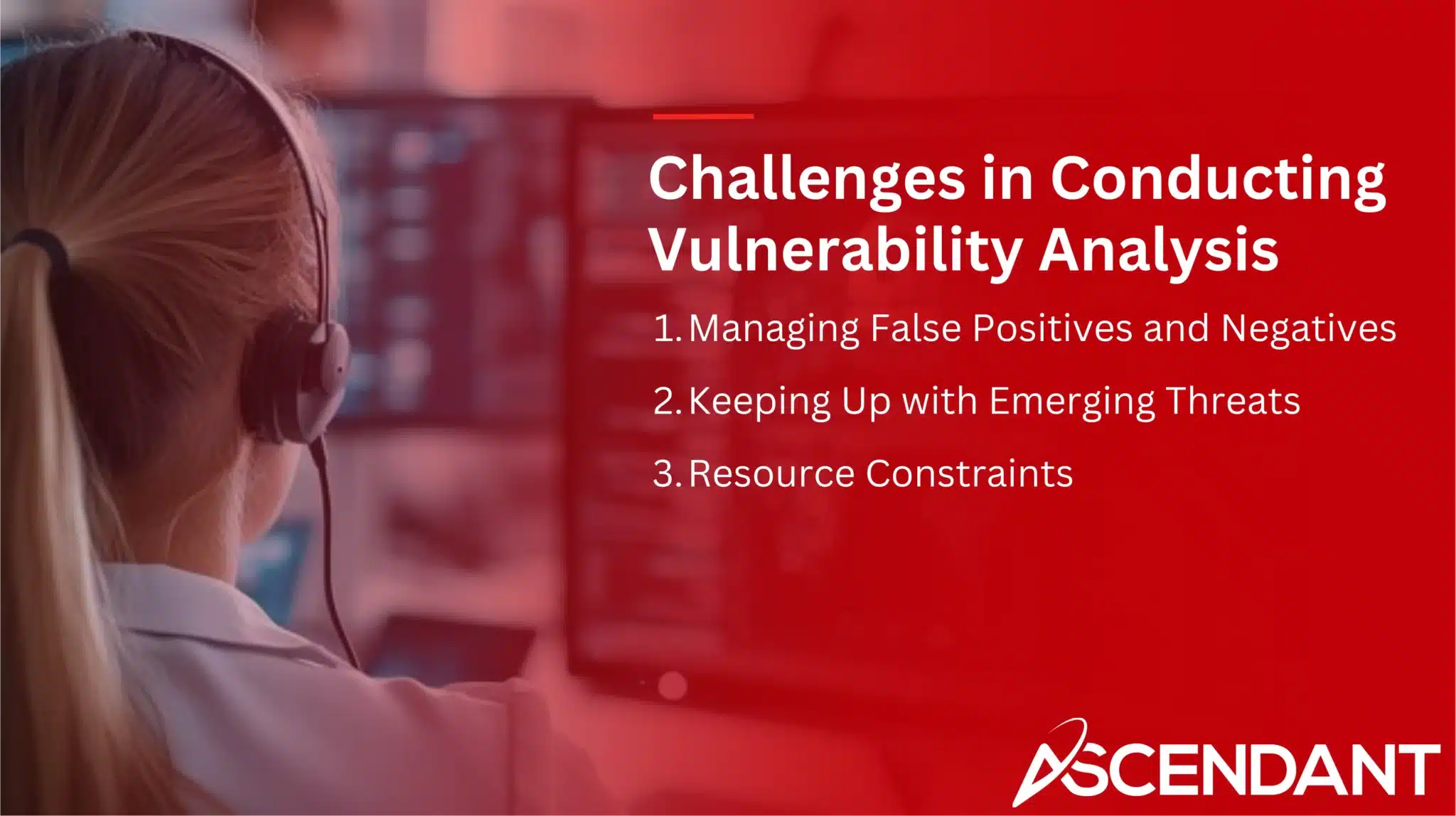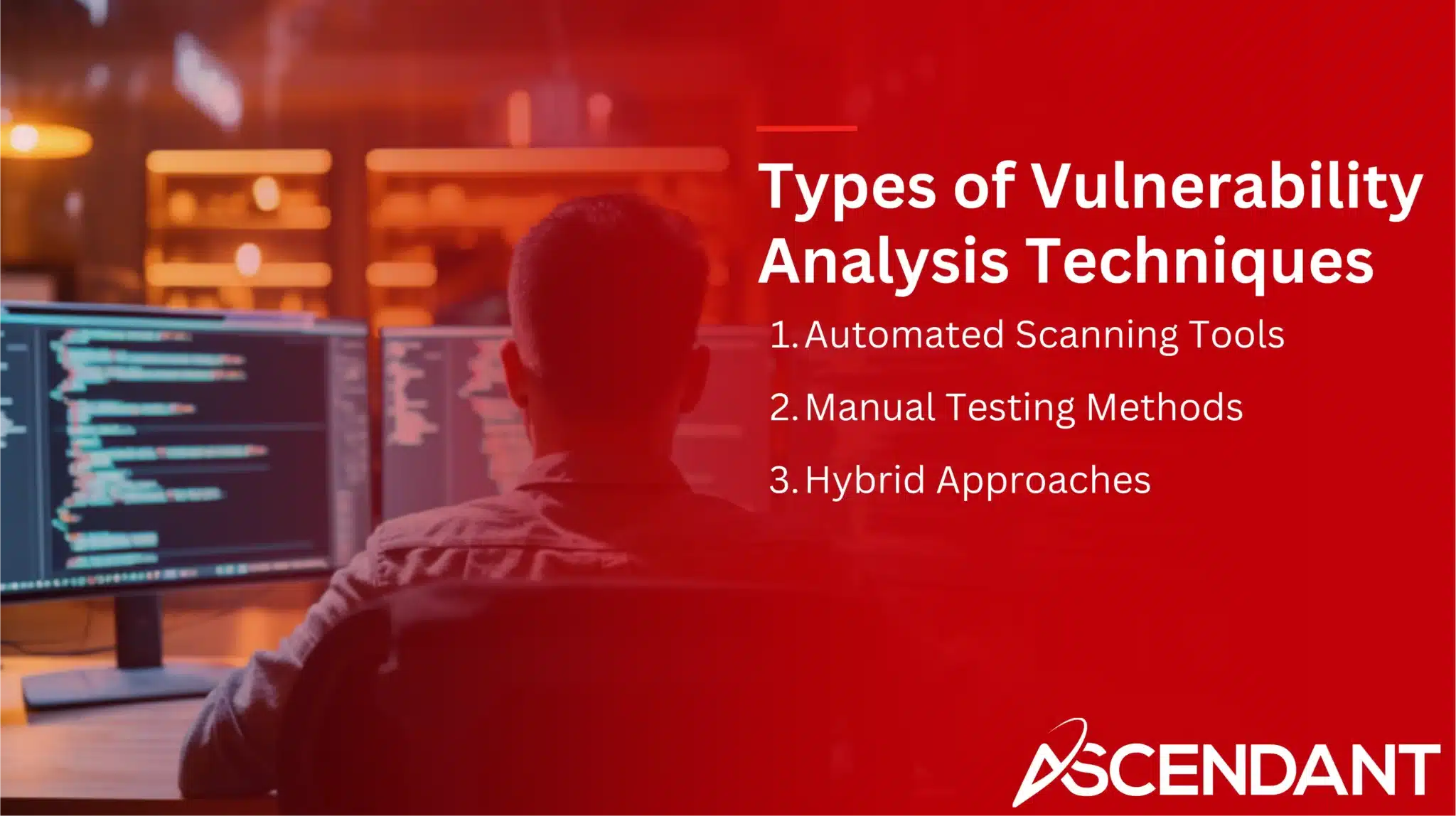Vulnerability analysis is all about finding and fixing security weaknesses in your IT systems before cybercriminals can exploit them. This guide will explain what vulnerability analysis is, the key steps to effectively carry it out, and the best practices and tools you can use. By the end of this article, you’ll have a solid understanding of how to keep your systems safe from cyber threats.
In This Article:
- Understanding Vulnerability Analysis
- Key Components of Vulnerability Analysis
- Types of Vulnerability Analysis Techniques
- Steps in the Vulnerability Analysis Process
- Common Tools for Vulnerability Analysis
- Importance of Regular Vulnerability Analysis
- Challenges in Conducting Vulnerability Analysis
- Best Practices for Effective Vulnerability Analysis
- Continuous Vulnerability Analysis for Enhanced Security
Key Takeaways
- Vulnerability analysis is critical for identifying and remediating security weaknesses within an IT environment to enhance overall security posture.
- A comprehensive vulnerability assessment combines automated tools, manual techniques, and a structured process to systematically identify and prioritize vulnerabilities.
- Regular vulnerability assessments help organizations stay compliant, reduce the risk of costly data breaches, and ensure timely remediation of critical vulnerabilities.
Understanding Vulnerability Analysis
The process of vulnerability assessment is aimed at discovering, categorizing, and addressing security vulnerabilities. It serves to pinpoint areas of weakness and potential threats within an organization’s IT infrastructure that attackers might exploit to gain unauthorized access or cause harm. Recognizing these weak points allows organizations to formulate strategies for remediation and risk mitigation, thereby strengthening their defense against attacks.
A vulnerability represents a flaw or loophole that could be leveraged by malicious actors during a cyber attack. These gaps can appear in numerous forms such as poorly configured systems, code vulnerabilities open to injection attacks, issues with user privilege rights management, and flaws in authentication protocols. The capability to prevent adversaries from exploiting these identified weaknesses is contingent upon the thorough discovery of such vulnerabilities.
Employing both automated tools and manual methods proves essential in the comprehensive execution of the vulnerability assessment process—a fundamental component toward building robust cybersecurity measures. Integrating automation’s efficiency with meticulous human evaluation ensures more effective detection and ranking of security shortcomings. This dual-faceted approach facilitates crafting targeted incident response plans poised for swift action should breaches occur.
Conducting regular assessments moves beyond merely spotting security deficiencies. It plays an instrumental role in safeguarding against network intrusions while fortifying an enterprise’s digital landscape against infiltration attempts. By proactively identifying and rectifying identified faults within their networks’ defenses, companies significantly bolster their overall protective stance—thereby diminishing the likelihood of succumbing to malicious cyber activities.
Key Components of Vulnerability Analysis
The vulnerability assessment process commences by compiling a detailed inventory of all IT elements such as hardware, software, and services. This catalog is essential in pinpointing security weaknesses within the organization’s infrastructure. Without an accurate understanding of existing assets, performing a proficient analysis for vulnerabilities becomes difficult.
In order to keep abreast with new and evolving threats, it is vital to integrate threat intelligence feeds and exploit databases that are readily available. These platforms shed light on known vulnerabilities and up-and-coming dangers that organizations may face, enabling them to strategically organize their response efforts. By utilizing these tools effectively, businesses can ensure they focus on resolving the most serious vulnerabilities first thereby diminishing the likelihood of succumbing to cyber-attacks.
Employing both automated systems and manual tactics plays a crucial role in detecting security flaws through vulnerability scanning measures rapidly uncover familiar weak spots while manual examinations delve deeper into more intricate or complex security issues. Harnessing both strategies offers an exhaustive approach towards identifying potential areas for breach across various levels, ensuring comprehensive detection and subsequent rectification of prevalent as well as elaborate cybersecurity deficiencies.
Types of Vulnerability Analysis Techniques
Vulnerability analysis employs various methods that have their unique advantages and drawbacks. These can be widely classified into categories such as automated scanning tools, manual testing techniques, and a combination of both known as hybrid approaches.
These methodologies are essential in detecting and mitigating security vulnerabilities present within the IT infrastructure of an organization.
Automated Scanning Tools
Leveraging automation in vulnerability testing enhances the efficiency of identifying, prioritizing, and addressing security vulnerabilities. Automated scanning tools accelerate this process by swiftly pinpointing systems at risk. These instruments excel at revealing recognized software flaws that can subsequently be sorted for fixing according to their criticality.
Tools like SentinelOne utilize both active and passive techniques during network security scans to bolster the discovery of vulnerabilities throughout networks and communication pathways. Web application scanners are designed specifically to uncover weaknesses inherent to internet-based platforms, ensuring heightened security for these essential services.
By integrating automated scanning technology into their strategies, organizations can improve upon their vulnerability management practices while safeguarding against established threats with more precision.
Manual Testing Methods
Although automated tools play a key role in streamlining the process of vulnerability testing, the inclusion of human expertise is imperative for uncovering complex security weaknesses that might elude these tools. Employing manual strategies like penetration testing permits cybersecurity professionals to mimic actual attack scenarios and spot sophisticated vulnerabilities demanding an advanced grasp of how the system operates.
Incorporating such tactics enhances automated tool usage, guaranteeing a thoroughgoing vulnerability assessment by leveraging various vulnerability assessment instruments.
Hybrid Approaches
Integrating automated scanning tools with manual testing strategies creates a hybrid approach that optimizes vulnerability detection. This fusion offers an in-depth insight into the security weaknesses present within IT systems.
By utilizing both methods, organizations can refine their remediation plans and effectively tackle all potential security gaps.
Steps in the Vulnerability Analysis Process
The vulnerability assessment process involves several critical steps, each designed to ensure a thorough and systematic approach to identifying and addressing security vulnerabilities. These steps include:
- Preparation and planning
- Vulnerability identification
- Risk evaluation and prioritization
- Remediation and mitigation
- Reporting and documentation
A structured process helps organizations effectively manage and mitigate security risks.
Preparation and Planning
The beginning stage of preparation is focused on setting the boundaries and goals for the vulnerability assessment, gaining insights into potential points of attack, and pinpointing critical threats. It’s imperative to determine which assets require evaluation in order to customize the process efficiently. Keeping an up-to-date inventory of assets is necessary for a precise evaluation of vulnerabilities and strategizing corrective actions.
Devising a definitive schedule for both the assessment phase and subsequent remediation actions is crucial to ensure that the approach taken is systematic and well-coordinated.
Vulnerability Identification
Techniques for identifying vulnerabilities encompass manual processes as well as the use of automated scanning instruments. These automatic scans leverage third-party utilities and cybersecurity offerings that tap into vulnerability databases to pinpoint security weaknesses within systems. Such network vulnerability scans examine networks and their communication pathways, seeking out potential points of compromise in devices including routers and firewalls. Meanwhile, host-based assessments concentrate on scrutinizing individual entities like workstations and servers for issues such as outdated software or improper configurations.
The practice of regular vulnerability assessments is vital due to the fact that new implementations or changes in configurations can lead to fresh vulnerabilities surfacing. The implementation of continuous monitoring through ongoing assessment enables organizations to detect emergent threats swiftly and ensure they are equipped to close any discovered security gaps without delay.
Risk Evaluation and Prioritization
After pinpointing vulnerabilities, it’s crucial to assess and rank them according to criteria including the jeopardy posed to sensitive data, attack severity, possible harm from exploitation, availability of fixes, and the immediacy required for resolution. Grasping how these weaknesses might affect business functions is key in assigning remediation precedence correctly so that those posing a high risk are dealt with promptly to thwart potential data breaches.
Entities grapple with zero-day vulnerabilities which demand swift action and may elude detection during routine checks. Persistent scanning generates comprehensive analytics that help teams strategically tackle patching by focusing on rectifying vulnerabilities in accordance with their evaluated threat level.
Remediation and Mitigation
Concluding the vulnerability assessment process entails sealing any detected security gaps to uphold a robust defensive line and an optimal security posture. The plan for remediation is comprised of essential elements: outlining the specific vulnerability, rating its severity level, evaluating possible repercussions, identifying impacted systems, and suggesting appropriate corrective actions.
Organizations typically spend between 95 and 155 days to successfully remediate vulnerabilities. Integral to this mitigation procedure are subsequent scans which serve as verification measures that previously identified vulnerabilities have indeed been effectively resolved.
Reporting and Documentation
The report generated from the vulnerability assessment must encompass comprehensive details regarding the nature of each vulnerability, when it was discovered, systems that are impacted, potential damage it can cause, and a plan for rectification. It is imperative that the report also incorporates information on how to prioritize these vulnerabilities and offers advice on remediation during its reporting stage.
To illustrate the exploitability of every critical vulnerability identified in the assessment process, inclusion of a proof of concept is essential. This allows stakeholders with varying levels of technical expertise to grasp fully what security risks they may be facing. Thereby ensuring all parties involved are effectively informed about potential threats.
Common Tools for Vulnerability Analysis
A plethora of instruments are at your disposal to execute vulnerability assessments, tailored for a range of systems and security weaknesses. Such tools fall into classifications like network security scanners, web application scanners, and host-based analyzers. To ensure robust security management, it’s essential to employ a combination of these diverse tools.
Network Security Scanners
Scans for network vulnerabilities encompass a range of elements such as networks, channels used for communication, and devices involved in networking. The scope of such scans extends to an array of equipment including hubs, switches, routers, firewalls, clusters of machines, and servers. These scans serve the purpose of detecting all security weaknesses present in specified devices while also categorizing each vulnerability identified.
The implementation of these scanning tools is crucial for discovering and mitigating any security gaps that exist within the network infrastructure of an organization.
Web Application Scanners
Scanners dedicated to web applications concentrate on pinpointing weaknesses that cyber attackers frequently exploit. Available as both open-source and proprietary solutions, these instruments are vital in elevating application security by helping prioritize protective measures. Dynamic Application Security Testing (DAST) tools play a critical role by uncovering vulnerabilities while the web applications are running, thereby safeguarding them against looming threats.
Host-Based Analyzers
Vulnerability assessments centered on hosts scrutinize each system, encompassing both servers and workstations. During these evaluations, they look for issues like obsolete software versions, absent security updates, and settings that have not been configured correctly.
These host-specific analyses deliver thorough understanding of the risks a business faces from internal and external sources as well as the possible repercussions those risks carry.
Importance of Regular Vulnerability Analysis
It is essential to perform vulnerability assessments frequently to uncover concealed security threats within an organization’s IT systems. Regularly identifying and staying informed about these vulnerabilities are critical, especially considering that a significant 62% of organizations remain unaware of their own weak spots. By pinpointing and remedying these issues, companies can enhance their ability to respond quickly and effectively to incidents, leading to faster detection and resolution when breaches occur.
Maintaining a schedule for regular vulnerability assessments aids in adhering to regulatory requirements, which helps avoid hefty fines and damage to the company’s reputation. In a time where data breach costs have soared globally—reaching $4.88 million on average in 2024—the financial benefits of consistent vulnerability testing cannot be overstated. The sheer volume of reported vulnerabilities peaking at over 7,000 cases in 2023 underscores the urgency for timely evaluations as a defense against rapidly emerging threats.
Addressing high-risk vulnerabilities promptly is crucial because threat actors typically exploit roughly three-quarters of them within just 19 days after disclosure. Factors such as compliance obligations, changes made within the infrastructure framework, or evolving business needs may dictate how often these vulnerability assessments should take place. Consistent monitoring through continuous assessment practices is paramount not only for countering current dangers but also ensuring enduring security strength amidst an ever-changing landscape of cyber threats.
Challenges in Conducting Vulnerability Analysis
Conducting vulnerability assessments is crucial, yet it poses a series of difficulties. Organizations frequently grapple with the task of distinguishing between false positives and negatives, staying abreast of new threats, and contending with limitations in resources.
These obstacles can hinder the success of vulnerability assessments and complicate the upkeep of a strong security posture.
 Managing False Positives and Negatives
Managing False Positives and Negatives
Alert fatigue, stemming from false positives, may cause security teams to become desensitized and potentially disregard genuine threats, diminishing their credibility. When scans are not configured properly, the resulting vulnerability reports can be inaccurate. They might exaggerate or downplay the actual level of security risks.
If vulnerabilities are not promptly remedied, there is a risk that serious breaches in security and subsequent loss of data may occur.
Keeping Up with Emerging Threats
In the year 2024, organizations encountered approximately 600 new vulnerabilities each week. This surge in cyber threats posed a significant challenge for these entities as they struggled to track and manage such an overwhelming number of security issues. Given this deluge of potential risks, firms often found it difficult to determine which vulnerabilities required immediate attention. On average, addressing a critical vulnerability took around 16 days—a delay that could potentially heighten security concerns. Regular training and consistent updates are essential measures that can assist teams in staying abreast with the swiftly changing nature of cyber threats and their associated weaknesses.
Confronted by an intricate web of ever-shifting cyber threats, businesses must implement effective strategies to discern between true risks and false alarms within their vulnerability assessments process. Effective managing both positives and negatives is crucial for streamlining these evaluations. By integrating automation tools into their processes, companies can mitigate staffing limitations while simultaneously boosting the thoroughness and speed with which they conduct analyses on potential system vulnerabilities.
Resource Constraints
Insufficient staffing and budget limitations can impede the ability of organizations to promptly address vulnerabilities, thereby elevating the likelihood of adversaries exploiting these security gaps. The process of vulnerability management often encounters substantial obstacles in numerous companies as a result of these resource deficiencies. In such scenarios where resources are sparse, automation emerges as an indispensable component that amplifies the proficiency with which vulnerability evaluations are conducted.
The implementation of automated tools acts as a counterbalance to limited resources by guaranteeing comprehensive and proficient vulnerability assessments. These instruments enhance the capacity for swiftly identifying systems at risk, enabling security personnel to concentrate their efforts on categorizing and rectifying the most severe vulnerabilities.
Best Practices for Effective Vulnerability Analysis
Implementing top-tier strategies can markedly enhance the efficiency of vulnerability assessments. An all-encompassing policy for vulnerability scanning ought to encompass designation of a responsible owner, endorsement from leadership, stipulations on scan regularity, particulars about configuration and measures to be taken after conducting scans.
Observance of these protocols guarantees that vulnerability assessments are conducted both meticulously and in an orderly fashion.
Maintain an Up-to-Date Asset Inventory
Keeping a current inventory is essential for identifying potential vulnerabilities. A precise record of assets assists in creating successful strategies to address weaknesses. Failing to refresh the asset inventories might result in missed vulnerabilities, thereby heightening security threats.
It’s important to implement a regular timetable for revising the asset inventory, which guarantees steady and reliable vulnerability assessments.
Leverage Automated Tools
Employing automated tools for vulnerability scanning enhances the speed of detection and diminishes the likelihood of mistakes. Such tools are crucial in conducting effective and precise vulnerability assessments as they decrease potential human errors, enabling organizations to identify and remediate vulnerabilities with greater efficiency.
Foster Cross-Functional Collaboration
Cross-functional collaboration is essential to ensure effective communication and timely remediation in vulnerability management. Organizational silos can impede communication and delay the patching process, leading to increased risk. Encouraging teamwork between IT, security, and development teams enhances the efficiency of vulnerability remediation.
Multidisciplinary collaboration enhances the overall security posture by incorporating diverse inputs in vulnerability management.
Continuous Vulnerability Analysis for Enhanced Security
Vulnerabilities are dynamic and may develop over time, necessitating ongoing evaluations. The integration of automated vulnerability assessments within the CI/CD pipeline guarantees that continuous vulnerability scanning is in place. This constant process detects vulnerabilities not just in existing infrastructures, but also extends to older or third-party systems.
It has been found that around 60% of data breaches are linked to unpatched vulnerabilities, which underscores the critical nature of continual scrutiny. By proactively identifying and addressing these security gaps, organizations can significantly diminish the likelihood of experiencing a data breach. Employing regular vulnerability assessments allows entities to stay ahead of emerging threats and preserve their long-term cybersecurity stability.
Summary
To maintain a strong security posture, it is crucial to carry out frequent and comprehensive vulnerability assessments. This involves identifying and rectifying any security flaws through the use of both automated tools and manual methods, as well as promoting collaboration across various functions within an organization. By consistently analyzing vulnerabilities, businesses can stay ahead of changing threats, thereby ensuring enduring protection for their digital assets. It’s imperative to remain vigilant and proactive in safeguarding your organization against potential risks.
 Frequently Asked Questions
Frequently Asked Questions
Why is vulnerability analysis important for organizations?
Vulnerability analysis is essential for organizations as it helps identify and mitigate security weaknesses, protecting against potential cyber threats and enhancing overall security.
By proactively addressing vulnerabilities, organizations can significantly reduce the risk of exploitation.
What are the key components of a vulnerability analysis?
A comprehensive vulnerability analysis requires maintaining an accurate asset inventory, utilizing threat intelligence feeds, accessing vulnerability databases, and integrating both automated and manual assessment techniques.
This combination ensures a thorough understanding of potential vulnerabilities.
How do automated scanning tools enhance vulnerability analysis?
Automated scanning tools significantly enhance vulnerability analysis by efficiently identifying and prioritizing security vulnerabilities, enabling organizations to quickly detect and address known issues.
This leads to improved overall security posture and quicker remediation efforts.
What are the challenges in conducting vulnerability assessments?
Conducting vulnerability assessments is challenging due to false positives and negatives, the need to stay ahead of emerging threats, and limitations posed by insufficient staffing and budget.
Addressing these issues is essential for effective security management.
How often should organizations conduct vulnerability assessments?
Organizations should conduct vulnerability assessments regularly and continuously to stay ahead of emerging threats and maintain a strong security posture. The frequency may vary based on compliance requirements and changes in infrastructure.


